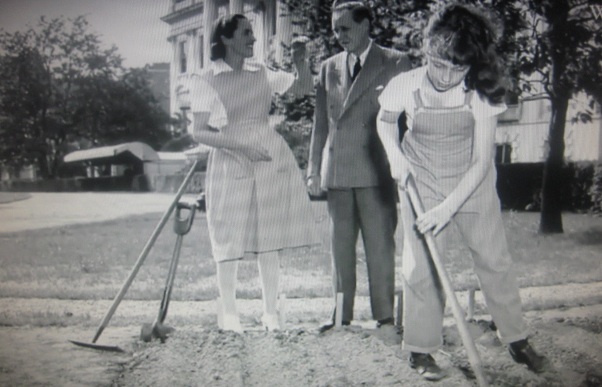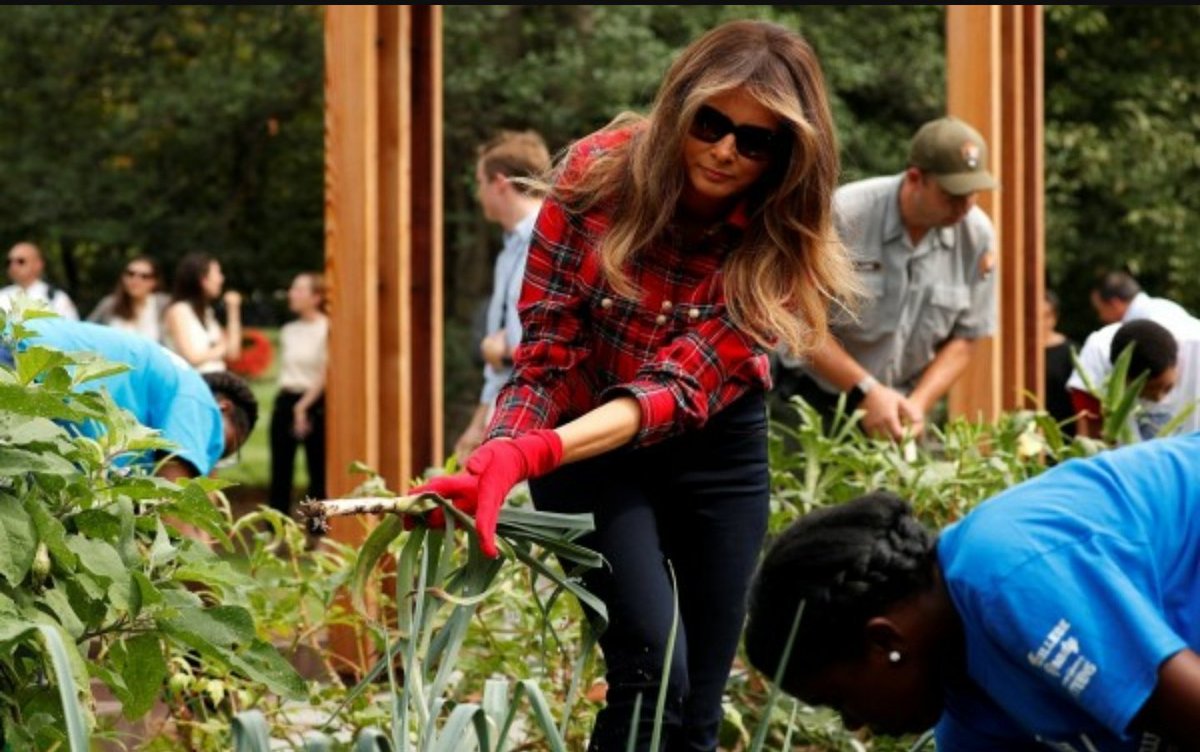The Top 5 US First Lady Gardeners

Victory Garden History
The White House Victory Garden has a long and interesting story.
Contrary to popular belief, The term “Victory Garden” did not actually originate in the United States. The term can be traced back to the 1600s in England when a book called The Victory Garden by Richard Gardner was produced. During the time The Victory Garden was released, England was anticipating a potential attack by Spain. According to the book, the purpose of the new idea of a “Victory Garden” was to prepare cities to be able to provide for their residents in case of such an attack.
300 years later and again, during a time of war and societal unrest, the term “Victory Garden” found its way to the US.
And so, the United States Victory garden began and, along with it, a great history of First Ladies who, for a variety of reasons, fought for the value they knew existed in the garden’s existence.
Here is my Top 5 list of First Ladies who have had the most profound impact on the White House Victory garden and, as a result, on community and home gardening in the US.
5. Patricia Nixon

Patricia Nixon organized garden tours of the White House.
Patricia Nixon was the wife of Richard Nixon, the 37th president of the United States.
Patricia Nixon started holding semi-annual (Spring and Fall) White House garden tours in 1973.
First Lady Nixon’s goal was to find a way to share the history and beauty of the White House gardens with the general American public.
The White House garden tours continue to be very popular.
4. Edith Wilson

Edith Wilson was the wife of President Woodrow Wilson the 28th US president.
President and First Lady Wilson were in the White House during WWI, a time when the country was trying to conserve resources. The Wilson’s brought in a flock of sheep to live on the White House lawn and to serve to mow and fertilize the First Lawn.
The Wilson’s efforts served as a powerful example of a creative way to conserve human, financial and natural resources.
3. Michelle Obama

Michelle Obama, wife of Barack Obama the 44th Us President, broke ground for the revival of the White House Victory Garden (gone since 1954) on March 20th 2009.
By October of the same year, the new White House Victory Garden produced 740 pounds of food. First Lady Obama reports to have spent only 0 on the planting of the garden!
The Garden’s crops include arugula, leaf lettuces, spinach, chard, collards, kale, tomatoes (more about tomatoes types with plant identification guide),
berries and herbs like basil, anise, hyssop and cilantro.
Some of the White House produce is used to prepare meals at the White House and some has been donated to Miriam’s Kitchen. Miriam’s kitchen is a Washington DC based foundation that prepares healthy meals for and feeds homeless men and woman in need.
2. Eleanor Roosevelt

Eleanor Roosevelt was the wife of Franklin D. Roosevelt the 32nd US president.
In 1943, during WWII, First Lady Roosevelt planted a large Garden on the White House lawn. The US Dept of Agriculture objected to the White House Garden but, seeing the potential for the garden to allow her to “lead by example”, Eleanor went forward with her plans.
By the end of WWII, Victory Gardens (behind private homes, in school yards, vacant urban lots, etc.) were producing 40% of the nations produce.
First Lady Roosevelt’s effort to “lead by example” resulted in a national effort that helped to conserve food and numerous natural resources, increase American’s consumption of fresh fruits and vegetables. In terms of physical health, this time period is considered to be one of the healthiest times for American’s.
The Roosevelt’s garden thrived until 1954 when President Dwight Eisenhower replaced it with a putting green on the White House lawn.
1. Abigail Adams

Abigail Adams was the wife of John Adams who was the second US president and mother of John Quincy Adams who was the sixth.
President Adams, First Lady Adams and their children were the first presidential family to live at the White House.
Abigail and the First Family planted the first “First Vegetables” at the White House in 1800.
First Lady Adams and President Adams did not have the opportunity to reap the benefits of their garden however, when Adams was voted out of office in 1801.
When Abigail’s son took over as the sixth president, he carried on the family tradition in the White House Garden and planted fruit trees, herbs and vegetables to feed his own family.
|